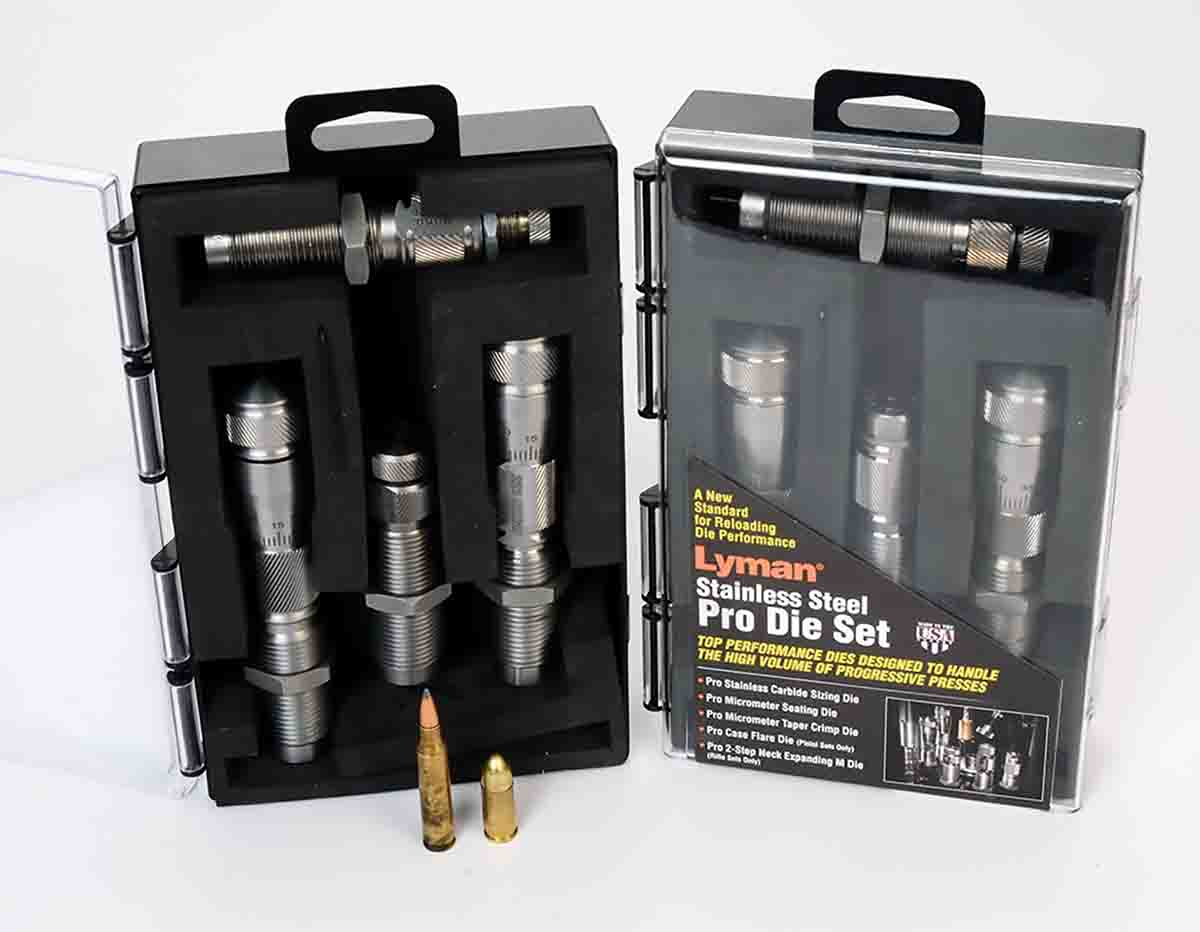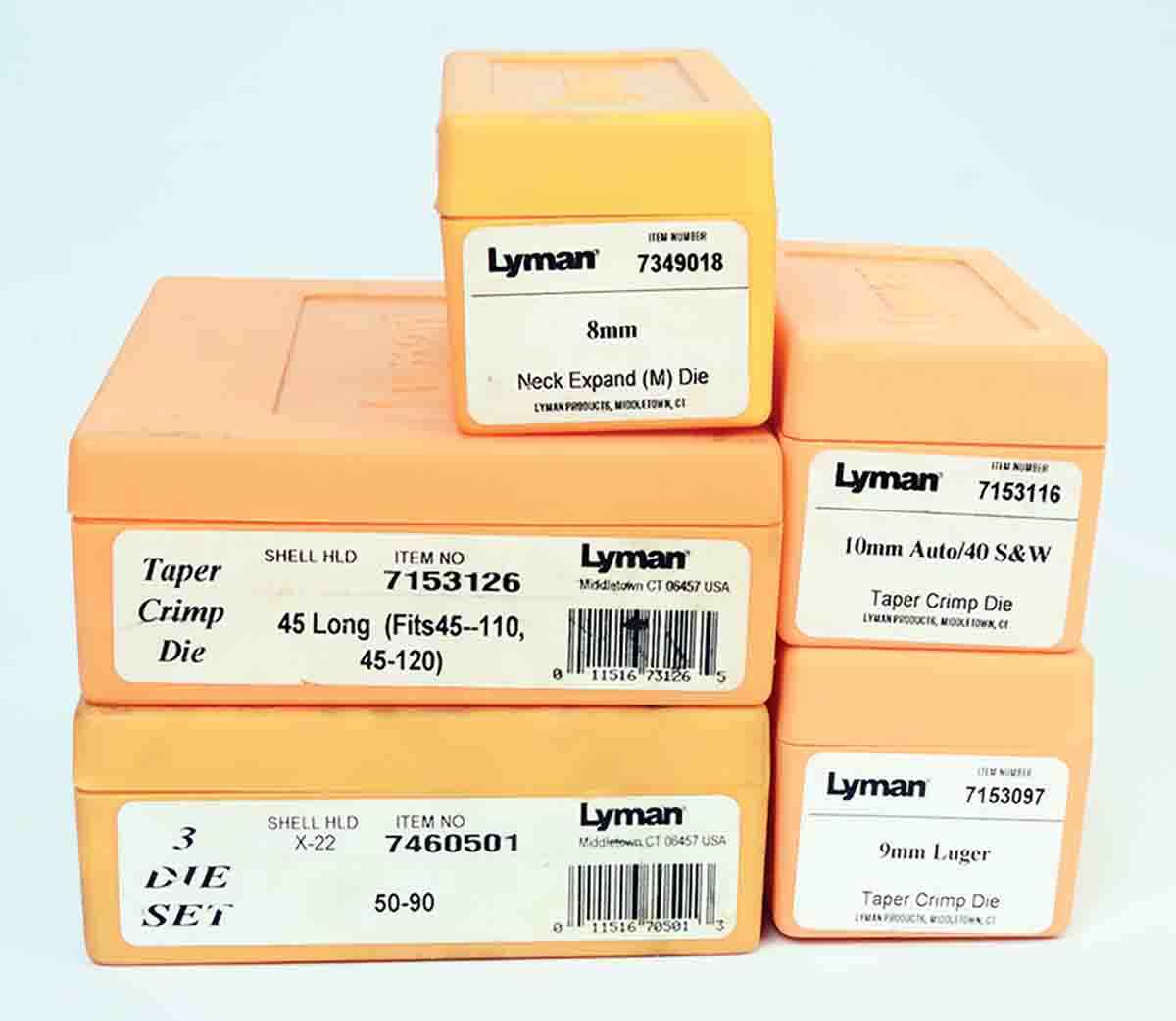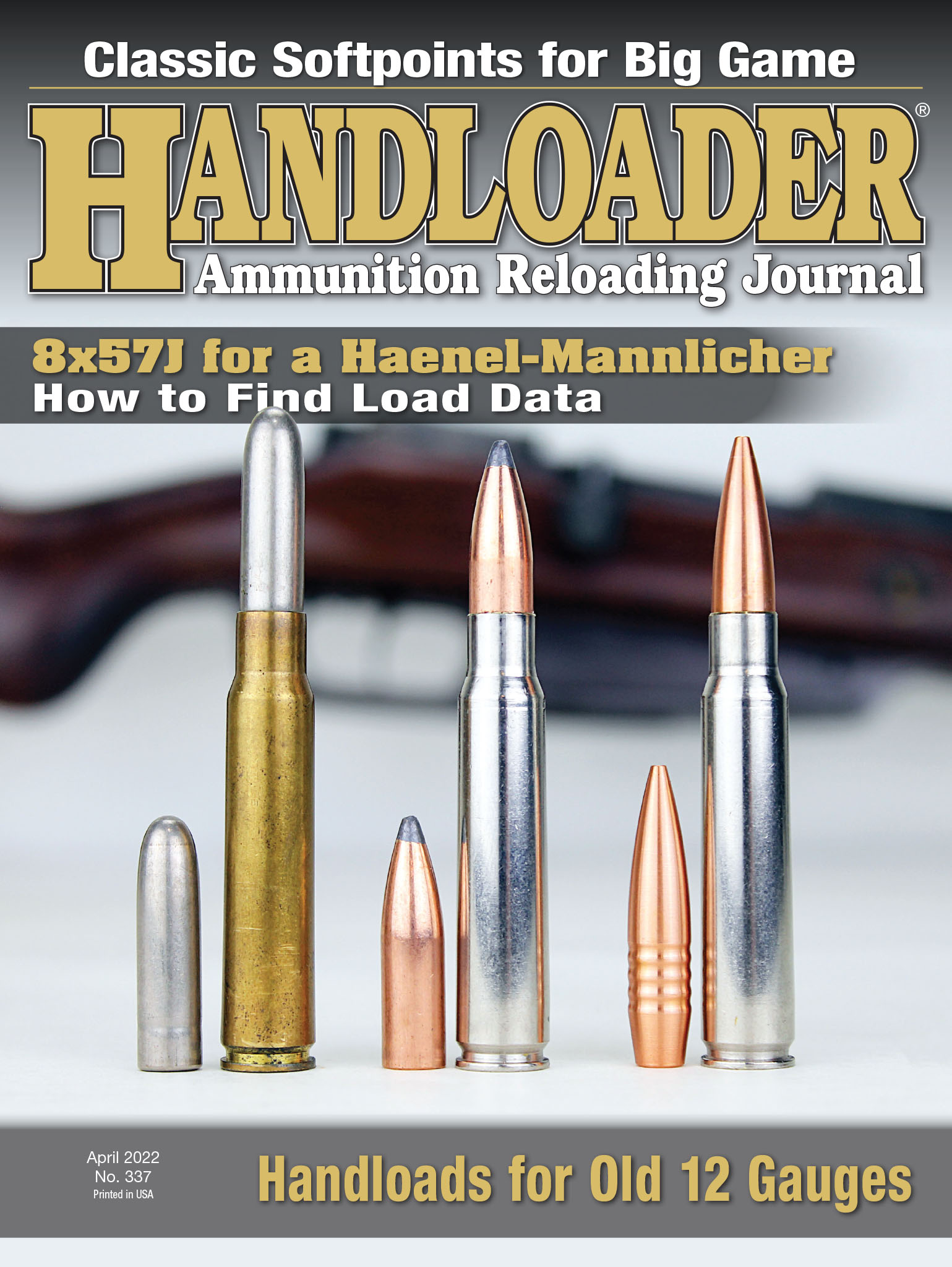Mike's Shootin' Shack
Lyman Reloading Dies
column By: Mike Venturino | April, 22

About a year later, another problem was encountered when I added .30-06 to my chores. Upon opening my second black Lyman box, I was surprised there were only two dies in it. One was for sizing/decapping and the other for bullet seating. Knowing that only a minor amount of .30-06 jacketed bullet shooting could be afforded, I had also purchased a .30-caliber Lyman mould. (It was No. 311375 for a 168-grain spitzer.)
How aggravated I was when my cast bullets were completely destroyed by forcing them into tight case necks! Rereading the Lyman Reloading Handbook 44th Edition, I realized that a third die for expanding/belling case mouths was also needed for rifle cast bullet seating. Lyman called it the M-Die. That sort of irked me because I thought, “Why not include that third die in rifle reloading dies?” My mindset back then was this: If you reloaded your own ammunition, then you automatically were a bullet caster, so rifle die sets should also include a neck expander/case mouth belling die. Anyway, with no .30-caliber M-Die and no .30-06 cast bullet shooting possible, I soon sold my .30-06 rifle. Another wasn’t acquired until 1971 and I bought a Lyman .30 M-Die with it.

When that happened, I was a bit more affluent, so .41 Magnum, .44 Special/.44 Magnum and .45 Auto Lyman carbide dies were purchased. (I also used the .45 Auto carbide dies for .45 Colt. I wasn’t that affluent!) The last time I passed through Clinton, ownership of that store must have changed. Only a fraction of Lyman’s cataloged reloading equipment was on hand. I’ve never been back.
As the years passed and jacketed bullets became affordable, I still remained true to my cast bullet roots. Along the way, my assortment of rifles grew, and for each a suitable bullet mould was purchased. Therefore, again I turned to Lyman’s M-Dies, adding those for .24, .25, 6.5mm, 7mm, 7.7mm, .32 Winchester Special and probably others, to the stacks of dies on my reloading bench.
Also added were taper crimp dies for 9mm Parabellum and .40 S&W. When black powder cartridge rifle (BPCR) shooting took off late in the 1990s, the folks at Lyman didn’t dally. Other reloading equipment manufacturers wanted considerable bucks for special order die sets for cartridges such as .45-90, .45-100 or .50-90 dies. Lyman added a full range of BPCR dies to its catalogs from .40-65 to .45-120. Also introduced were neck sizing and taper crimp dies for .40 and .45 BPCR cartridges.
With Lyman’s history of keeping up with the changing needs of handloaders, I wasn’t surprised when it announced its new Pro Die Sets. Lyman’s stainless steel Pro Die plastic boxes are labeled, “TOP PERFORMANCE DIES DESIGNED TO HANDLE THE HIGH VOLUME OF PROGRESSIVE PRESSES.” For those of us not into progressives, Pro Dies are just as useful.
At the time of this writing, Lyman’s Pro Dies are offered for .223 Remington, 6.5mm Creedmoor, .300 AAC Blackout, .308 Winchester, .380 Auto, 9mm Parabellum, .38 Super, .40 S&W/10mm and .45 ACP. When ordering Pro Dies, I specified .223 Remington and 9mm Parabellum.
Each Pro Die Set consists of four dies: a sizing/decapping die, which is carbide in the pistol calibers, a micrometer adjustable seating die and a micrometer taper crimp die for both rifle and pistol calibers. For case mouths, the pistol calibers have what is labeled a “flare die,” so bullets can be started without damage. (This is simply a new term for the old neck expanding-case mouth belling dies.) Pro Die Sets include Lyman’s tried and true M-Die. Aside from cast bullet seating, M-Dies are also helpful in getting jacketed bullets started straight and without peeling pieces of jacket. However, the resizing die stem has the ball neck expander so M-Dies are not absolutely necessary for jacketed bullet seating.
It’s hard to “test” reloading dies and quantify the results. For instance, my only .223 Remington rifle is one of the many AR variants, which certainly is not an MOA-level shooter. The rounds loaded with these new Pro Dies functioned perfectly and gave accuracy equal to any .223 Remington ammunition fired previously. My 9mm Parabellum handloads using the new Pro Dies were fired in both a 1944 vintage FN Hi-Power and my German MP40 submachine gun. Again, functioning and perceived accuracy was up to par. My complaints on the new dies are two and minor. First, the dies’ rings have no provision for locking. They must be readjusted every time they are mounted in reloading presses. Second, with the dies sent to me, the caliber labels on the plastic boxes are too small. Personally, I liked the old black cardboard boxes better, but that is simply nostalgia.
Lyman Products Company strives to stay ahead of the curve in reloading trends. My belief is that these new stainless steel semi-custom die sets will be well received.


